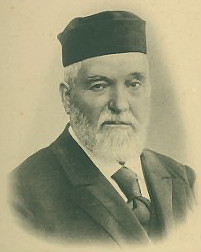Tea!
Kalman Ze’ev Yankelevich Wissotzky (1824-1904) was the son of struggling merchants in Russia. After studying at the famous Volozhin Yeshiva, he joined an agricultural colony which paved his way into the tea trade. In 1849, he established the Wissotzky Tea company in Moscow and very soon became known as the “King of Russian Tea.” By 1904, Wissotzky Tea was popular across the world, with branches in Europe and America. Meanwhile, the situation in Russia worsened to the point that Wissotzky Tea moved their headquarters to Israel. (During the Russian Revolution, the masses protested “Jewish domination” and chanted their slogan: “Tea of Wissotzky, Sugar of Brodsky, and the Tzar is Leiba Trotsky!”) In 1936, Wissotzky Tea opened a factory in Israel, becoming the first tea company in the region. Since then it has been Israel’s leading tea brand. It would surely make Wolf Wissotzky proud – he was an ardent Zionist and one of the main shakers of the movement. He gave 10,000 rubles to the Alliance Israelite for Zionist causes, then another lump sum of 20,000, as well as 6000 rubles to start one of Israel’s first monthly magazines (called HaShiloach). Wissotzky personally traveled to Israel and laid the groundwork for the Lod, Nablus and Gaza settlements. He also established and financed the first school in Jaffa. Outside of Israel, too, Wissotzky was a great philanthropist. In 1898, he gave 70,000 to build a yeshiva in Byelostok. Most amazingly, he worked tirelessly to help the Cantonists – young Russian Jews forcibly taken from their homes and conscripted into life-long military service. Wissotzky ensured many of them had Shabbat services and Passover meals, and helped bring countless young boys back to Judaism. Ultimately, he would leave over 1 million rubles to charity. In those days, one ruble was equal to 0.514 ounces of gold, which in today’s value is nearly $1,000. So, Wissotzky donated nearly one billion dollars to charity! Now that’s philanthropy!
Words of the Week
Great minds discuss ideas; average minds discuss events; small minds discuss people.
– Eleanor Roosevelt



